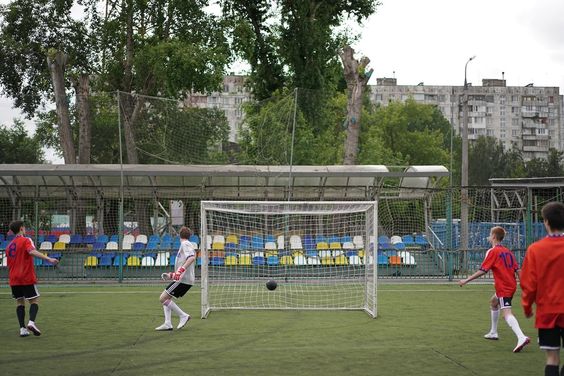What is an Edge in Football
Football, known as soccer in some parts of the world, is a sport cherished for its dynamic gameplay and strategic depth. Central to the essence of football is the concept of “edge”—a term that encapsulates the nuanced advantages and tactics that teams employ to secure victory on the pitch. In this extensive guide, we delve deep into what constitutes an edge in football, exploring various facets that contribute to a team’s success.
Defining the Edge in Football
The “edge” in football refers to any slight advantage that can influence the outcome of a match in favor of one team over another. It encompasses multiple dimensions, ranging from tactical strategies to individual player skills and psychological readiness.
Tactical Strategies and Formations
Tactical strategies form the backbone of how teams approach matches. Coaches meticulously plan formations and playing styles to exploit weaknesses in the opposition while amplifying their own strengths. For instance, deploying a high-pressing game to disrupt the opponent’s build-up play or adopting a counter-attacking approach to capitalize on defensive lapses are common strategies used to gain an edge. Discover more information dynamichub.ca
Individual Player Skills
Beyond tactics, the proficiency of individual players plays a pivotal role in determining a team’s edge. Players with exceptional technical abilities, such as precise passing, dribbling, and shooting, can turn the tide of a game through moments of brilliance. Moreover, defensive prowess, agility, and decision-making under pressure are equally crucial for maintaining a competitive edge throughout the match.
Psychological Factors
Football matches are not merely battles of physical prowess but also tests of mental fortitude. Psychological factors, including confidence, resilience, and team cohesion, heavily influence a team’s performance. The ability to remain composed during high-pressure situations, such as penalty shootouts or crucial league fixtures, often separates victorious teams from the defeated.
Leveraging Data and Analytics
In the modern era, data and analytics have revolutionized how teams analyze and strategize. Advanced metrics provide insights into player performance, opposition tendencies, and even environmental factors like weather conditions. By leveraging these insights, coaches and analysts can tailor training regimes and match strategies to maximize their team’s chances of success.
Case Studies of Successful Teams
Examining the achievements of successful football teams offers valuable insights into what constitutes a winning edge. Teams renowned for their dominance, such as FC Barcelona during their peak under Pep Guardiola or the German national team’s systematic approach under Joachim Löw, showcase how a blend of tactical innovation, skilled players, and cohesive team dynamics can lead to sustained success.

The Evolution of Football Tactics
Football tactics continually evolve in response to changes in the game, innovations in training methods, and advancements in sports science. From the traditional 4-4-2 formation to the modern variations like 4-3-3 or 3-5-2, each tactic aims to optimize player positioning and movement to control the flow of the game and create scoring opportunities.
Coaching Philosophies and Leadership
Behind every successful football team lies a visionary coach whose leadership and strategic acumen shape the team’s identity. Coaches like Sir Alex Ferguson of Manchester United or Zinedine Zidane of Real Madrid exemplify how effective leadership can foster a winning culture and instill a relentless pursuit of excellence among players.
Conclusion
In conclusion, understanding the “edge” in football involves appreciating the multifaceted elements that contribute to a team’s success on the pitch. From tactical ingenuity and individual skills to psychological resilience and data-driven insights, each component plays a crucial role in shaping the outcome of matches. As football continues to evolve, teams that adapt and innovate while staying true to their core strengths will continue to maintain a competitive edge in this beautiful game.
FAQs
1. What exactly is the “edge” in football?
The “edge” in football refers to any slight advantage that one team may have over another, influencing the outcome of a match. It encompasses various factors such as tactical strategies, individual player skills, psychological readiness, and the ability to leverage data and analytics effectively.
2. How do tactical strategies contribute to gaining an edge in football?
Tactical strategies are crucial as they dictate how teams approach matches. Coaches design formations and playing styles to exploit opponents’ weaknesses while capitalizing on their own strengths. For instance, strategies like high-pressing or counter-attacking are employed strategically to gain a tactical advantage on the field.
3. What role do individual player skills play in determining a team’s edge?
Individual player skills are fundamental in football’s competitive landscape. Players with exceptional technical abilities such as precise passing, dribbling, and defensive prowess can influence game outcomes significantly. Their agility and decision-making under pressure are vital in maintaining a team’s competitive edge throughout a match.
4. How important are psychological factors in achieving success in football?
Psychological factors such as confidence, resilience, and team cohesion are equally critical in football. They often determine how players perform under pressure situations like penalty shootouts or critical league fixtures. Teams with strong psychological readiness can often overcome physical challenges and emerge victorious.
5. How has data and analytics impacted football strategies?
In the modern era, data and analytics have revolutionized football strategies. Coaches and analysts utilize advanced metrics to analyze player performances, opponent behaviors, and environmental factors. This data-driven approach helps teams tailor their training regimes and match strategies more effectively, thereby enhancing their chances of success on the field.




